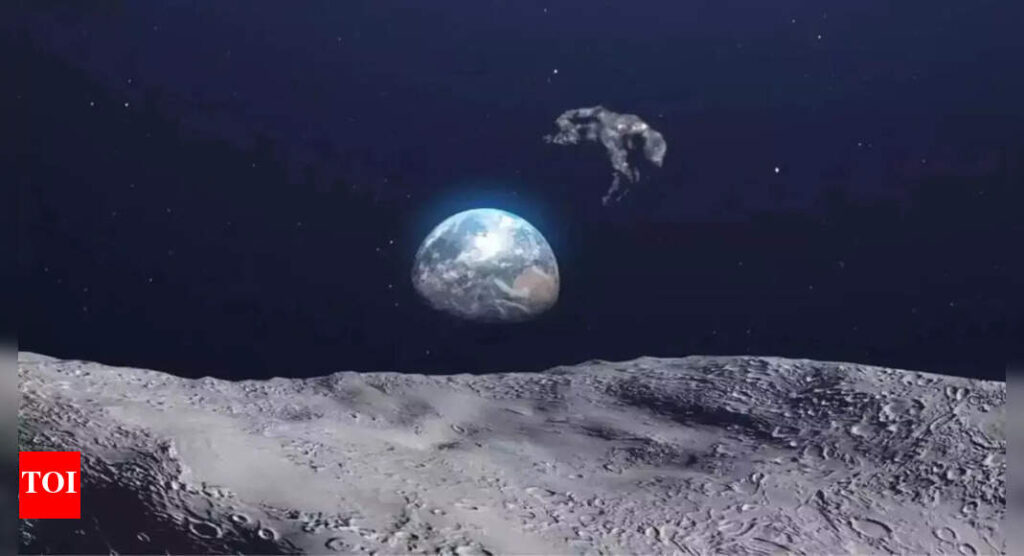Asteroid 2024 YR4:NASA James Webb Space Telescope recent observations reveal the potential that asteroid 2024 YR4 could be a small yet growing risk of collision, despite being no threat to the Moon. The new data reveals the potential danger to the lunar surface, prompting increased scientific interest in the asteroid’s trajectory. The Moon remains under the potential threat of asteroid YR4 while Earth can breathe easy. This underscores the need for continued investment in space observation technologies and planetary defence strategies. According to Space.com reports, as the asteroid reappears in 2028, astronomers will once again study its orbit, ensuring that if a threat ever does emerge, humanity will be prepared.
Asteroid 2024 YR4 poses growing lunar threat, reveals NASA’s James Webb Space Telescope
In May 2025, NASA’s James Webb Space Telescope captured a detailed observation of asteroid 2024 YR4. The space rock, large enough to destroy a city, was last spotted before it disappeared behind the Sun, making this observation humanity’s final view until 2028. According to the reports, the new data has refined predictions about YR4’s path and revealed a 4.3% chance of it colliding with the Moon in 2032. This may seem like a low probability, but it’s worth noting that such figures previously caused concern for Earth when the asteroid was first discovered.
Asteroid 2024 YR4 impact from threat to Earth to lunar concern
When asteroid 2024 YR4 was discovered in December 2024 and reported to the Minor Planet Center, it made headlines due to its unusually high 3.1% chance of impacting Earth; the highest ever recorded for a known asteroid at the time. This risk placed it prominently on NASA’s Sentry Impact Risk Table, a list that tracks potential asteroid threats to Earth. Over the next few months, astronomers refined their observations and calculations, gradually reducing YR4’s impact probability with Earth to near-zero. However, attention has since shifted to the Moon, where the impact probability has increased steadily, now standing at 4.3%.
Reasons behind scientists watching asteroid YR4 closely
- Size of the city killer asteroid 2024 YR4
NASA and ESA estimate that asteroid 2024 YR4 measures between 174 and 220 feet in diameter approximately the size of a 10-story building. Its destructive potential, combined with its shifting trajectory, makes it a significant object of interest for planetary defense.Due to its orbit around the Sun, YR4 is now out of view and will remain hidden until it returns to a visible range in 2028. Until then, the data gathered by the Webb telescope in March and May 2025 offers the most accurate prediction models currently available.
What if asteroid YR4 2024 hits the Moon
Although the idea of a Moon impact may sound dramatic, NASA reassures the public that such a collision would not alter the Moon’s orbit or significantly affect Earth. The Moon has withstood numerous asteroid impacts over its lifetime, and its mass and orbital stability are robust enough to handle another.Still, a collision would be a rare and scientifically valuable event, giving researchers a close look at how asteroids interact with large celestial bodies.YR4 and the larger threat of near-Earth asteroidsAsteroid 2024 YR4 joins a short list of space rocks that have triggered global concern in recent years, the most notable being Apophis, a much larger asteroid once believed to have a small chance of impacting Earth.Though both YR4 and Apophis are now considered safe for Earth, their close calls have emphasized the importance of preparedness and proactive monitoring.
Future of planetary defense
- NASA’s DART mission and its success
In 2022, NASA successfully conducted the Double Asteroid Redirection Test (DART) — the first mission to deliberately alter an asteroid’s trajectory by crashing a spacecraft into it. This mission demonstrated that we can, in principle, deflect a threatening asteroid from a collision course with Earth.
- NASA upcoming missions and tools
NASA and the European Space Agency plan to launch additional missions to observe Apophis in detail. However, some of these plans face uncertainty due to funding constraints under the Trump administration’s budget proposal. Meanwhile, NASA is also developing the NEO Surveyor, a powerful infrared space telescope designed to detect 90% of near-Earth objects (NEOs) that are 460 feet or larger and pass within 30 million miles of Earth. Scheduled for launch no earlier than 2027, it will play a crucial role in future planetary defense strategies.Also Read | NASA captures image of Mars’ Arsia Mons volcano, nearly twice the height of Earth’s tallest mountain


